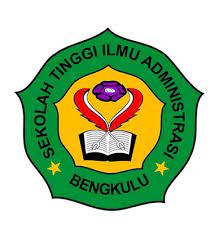PEMBINAAN ADMINISTRASI PEMERINTAHAN DESA OLEH CAMAT BELIMBING DI KABUPATEN MUARA ENIM, SUMATERA SELATAN
DOI:
https://doi.org/10.56135/jsb.v10i2.163Keywords:
Development, Administration, Village GovernmentAbstract
The sub-district government is a level of government that has an important role in implementing services to the community, this then makes the sub-district head the spearhead in implementing general government tasks as well as some autonomous matters delegated by the Regent/Mayor to be implemented within the sub-district area. From the background above, the author found the main problems including: First, how is village government administration developed by the Belimbing subdistrict head in Muara Enim Regency? Second, what are the obstacles to village government administration development by the Belimbing subdistrict head in Muara Enim Regency. The research used is qualitative research. From the research results, development by the sub-district head of village government officials in a sub-district is needed to achieve orderly village government administration and an effective government system. This is based on the indicators used in this research, namely; Planning has been carried out optimally, guidance has been. However, it has not yet run optimally, the briefing has been carried out. Obstacles faced by the Belimbing sub-district government are implemented inadequate human resources owned by village officials and capabilities that do not match expertise in their field of work and the village government's delay in submitting accountability reports to the sub-district.
References
ADB (Asian Development Bank). (2021). A Diagnostic Study of the Civil Service in Indonesia.
Mandaluyong: Asian Development Bank.
Aspinall, E., & Rohman, N. (2017). Village Head Elections in Java: Money Politics and Brokerage in the Remaking of Indonesia's Rural Elite. Journal of Southeast Asian Studies, 48(1), 31–52.
Asseburg, J., & Homberg, F. (2020). Public service motivation or sector rewards? Two studies on the determinants of sector attraction. Review of Public Personnel Administration, 40(1), 82-111.
Babbie, E. (2017). The Basics of Social Research (7th ed.). Boston: Cengage Learning.
Berman, E. M., Bowman, J. S., West, J. P., & Van Wart, M. R. (2016). Human resource management in public service: Paradoxes, processes, and problems. Los Angeles: SAGE Publications.
Fitriyani, H. (2016). Analisis Pengaruh Person-Organization Fit, Person-Job Fit dan Job Atribute terhadap Career Choice yang Dimediasi oleh Internship Opinion Mahasiswa Akuntansi Fakultas Ekonomi dan Bisnis Universitas Indonesia (Skripsi). Depok: Universitas Indonesia.
Ginting, D. C. B., & Kartika, I. G. A. P. (2013). Perlindungan Kesejahteraan Pegawai Negeri Sipil (PNS) Melalui Pemberian Jaminan Sosial. Kertha Semaya, 1(09).
Hartatik, E. S. (2022). The Transformation of the Javanese Patrimonial-feudalistic Bureaucracy from the Traditional Kingdom to the Dutch Colonial Period. Forum Ilmu Sosial, 49(2), 60- 72.
Indonesia. Undang-Undang Nomor 5 Tahun 2014 tentang Aparatur Sipil Negara (ASN). Lembaran Negara RI Tahun 2014 Nomor 6, Tambahan Lembaran RI Nomor 5494. Sekretariat Negara. Jakarta.
Jones, G. R. (2013). Organizational Theory, Design, and Change. Harlow: Pearson.
Kim, T., Kim, K., & Kim, S. (2022). Institutional correlates of public service motivation: Family, religion, and high school education. Asia Pacific Journal of Public Administration, 44(3), 214-233.
Lee, G., & Choi, D. L. (2016). Does public service motivation influence the college students’ intention to work in the public sector? Evidence from Korea. Review of Public Personnel Administration, 36(2), 145-163.
Liff, S. (2007). Managing Government Employees: How to Motivate Your People, Deal with Difficult Issues, and Achieve Tangible Results. New York: AMACOM: American Management Association.
Neuman, W. L. (2014). Social Research Methods: Qualitative and Quantitative Approaches (7th ed.). Harlow: Pearson Education Limited.
QS Top Universities. (2023). Retrieved from https://www.topuniversities.com/universities/universitas-indonesia#p2-rankings
Rhee, J. et al. (2017). Organizational Structures and Employees' Innovative Behavior: The Mediating Role of Empowerment. Social Behavior and Personality, 45(9), 1523–1536.
Ritz, A., Brewer, G. A., & Neumann, O. (2016). Public service motivation: A systematic literature review and outlook. Public Administration Review, 76(3), 414-426.
Santinha, G., Carvalho, T., Forte, T., Fernandes, A., & Tavares, J. (2021). Profiling public sector choice: Perceptions and motivational determinants at the pre-entry level. Sustainability, 13(3), 1272.
Solichin, S., Faridah, F., & Azuwandri, A. (2024). Analisis Rancangan Struktur Organisasi Pada Peran Divisi Human Capital Dalam Meningkatkan Produktifitas Perusahaan PT. Metropolitan Multi Sarana TBK, Prioritas Bengkulu. Jurnal STIA Bengkulu: Committe to Administration for Education Quality, 10(1), 75-84.
Stefani, P. R. U. (2018). Analisis Pengaruh Public Service Motivation, Work Value, dan Prosocial Behavior terhadap Pemilihan Karir di Sektor Publik: Studi Kasus Mahasiswa Jabodetabek. https://lib.ui.ac.id/detail?id=20475363&lokasi=lokal
Universum Global. (2023). Retrieved from http://universumglobal.com/rankings/
Van der Wal, Z. (2015). “All quiet on the non-Western front?” A review of public service motivation scholarship in non-Western contexts. Asia Pacific Journal of Public Administration, 37(2), 69-86.
Downloads
Published
How to Cite
Issue
Section
License
Copyright (c) 2024 Novi, Dian, Fajar Sari

This work is licensed under a Creative Commons Attribution-ShareAlike 4.0 International License.







